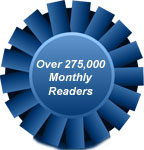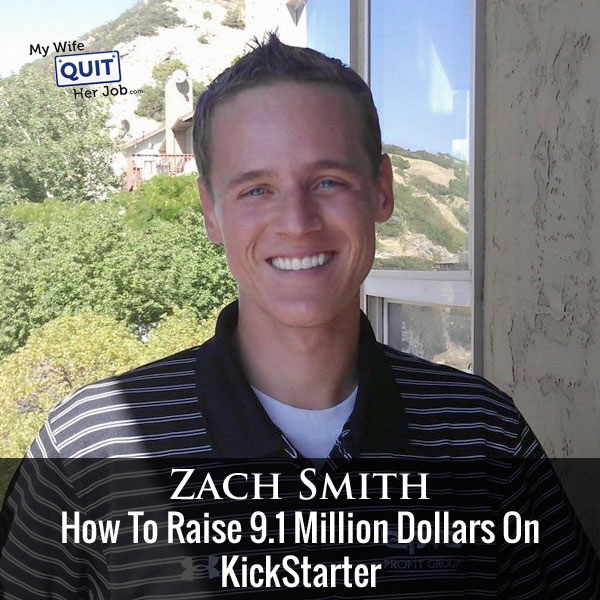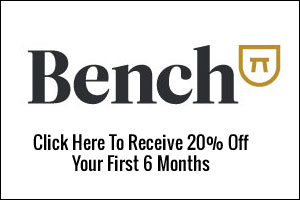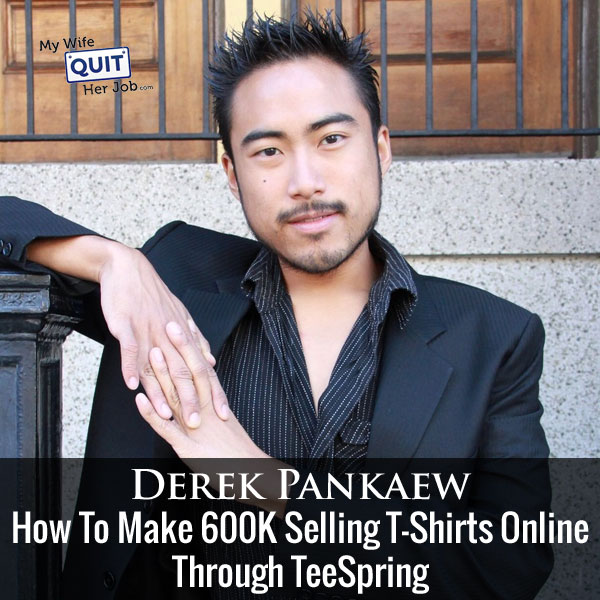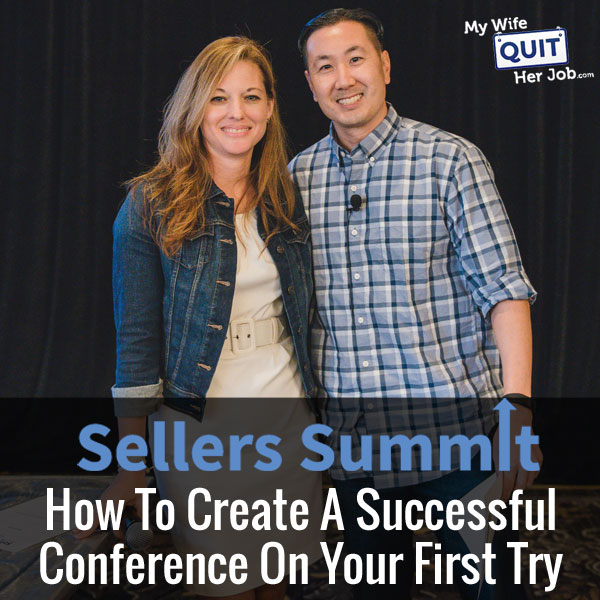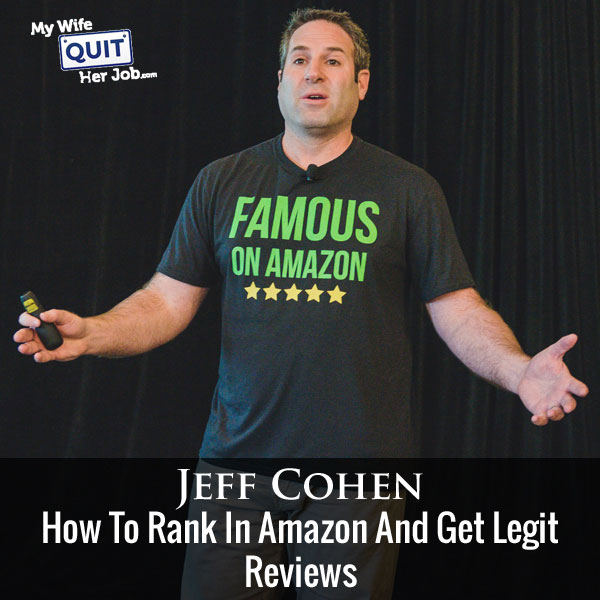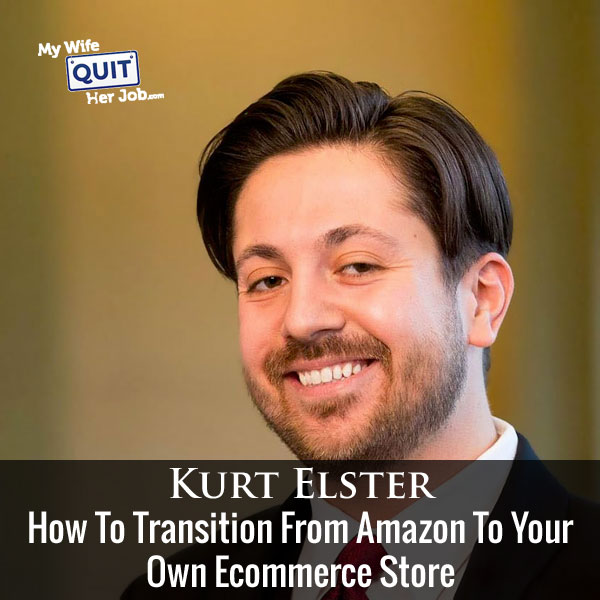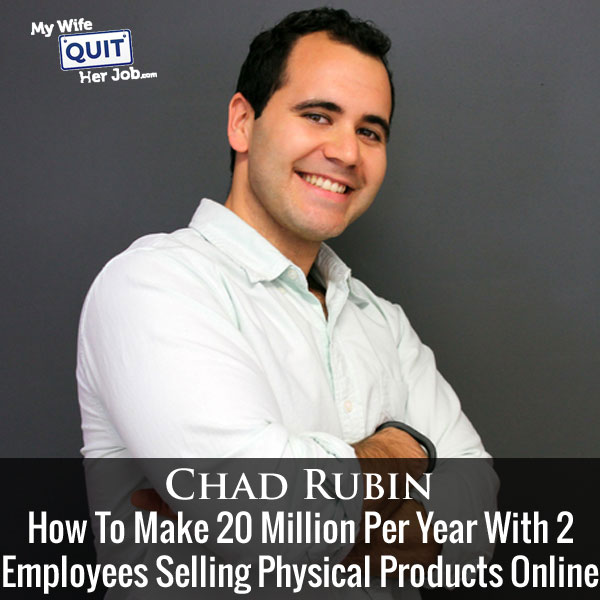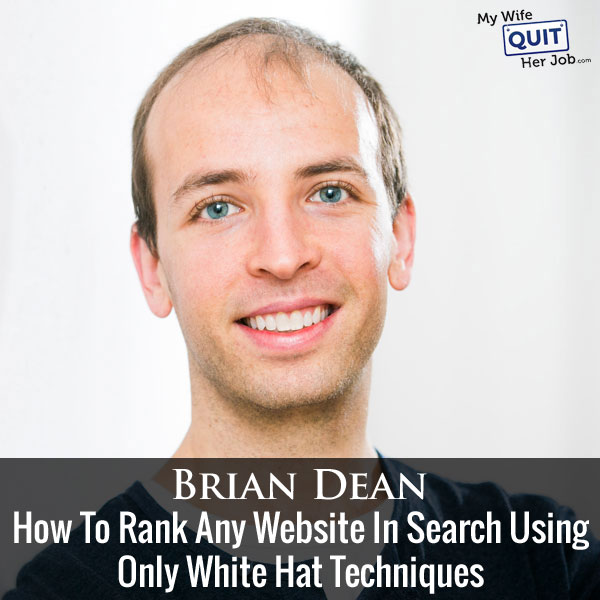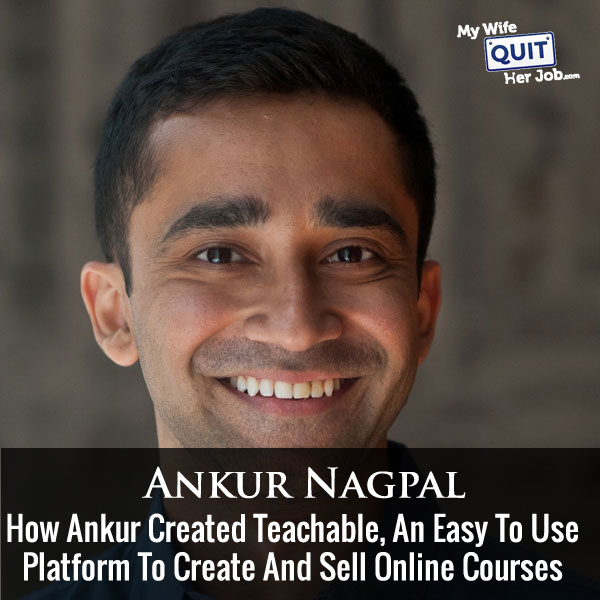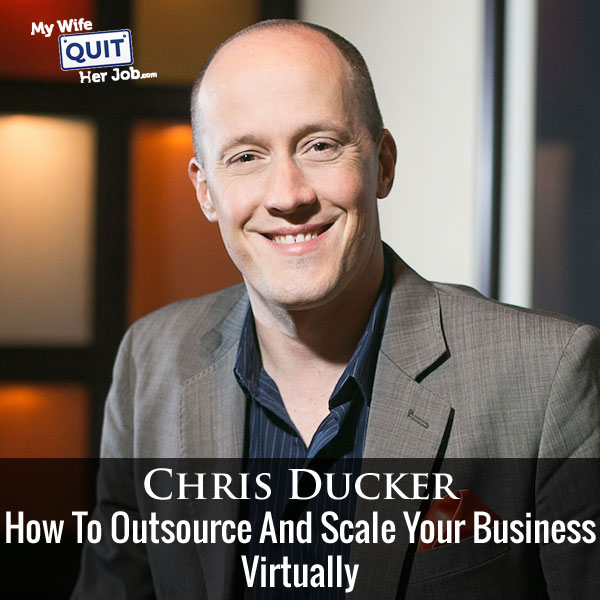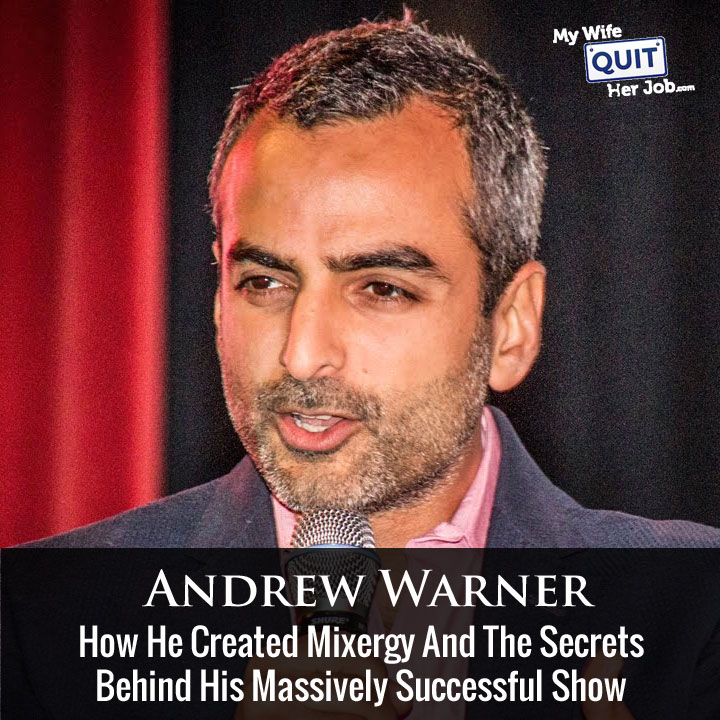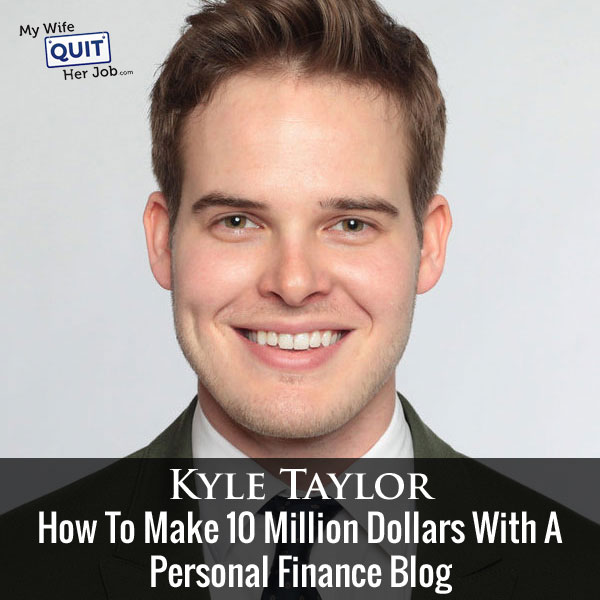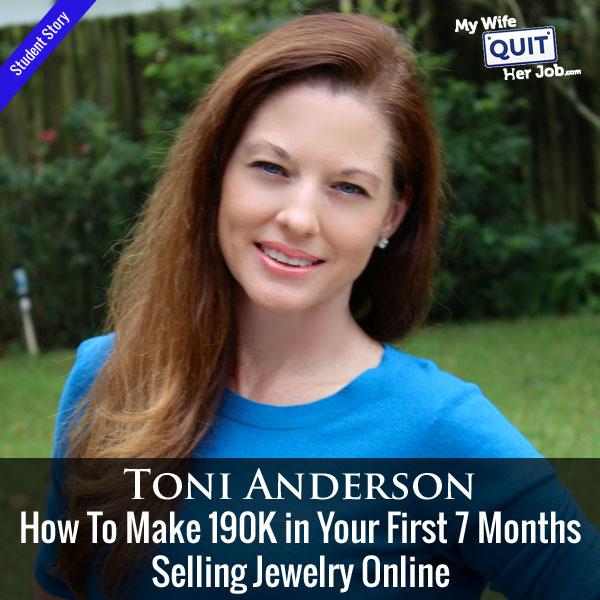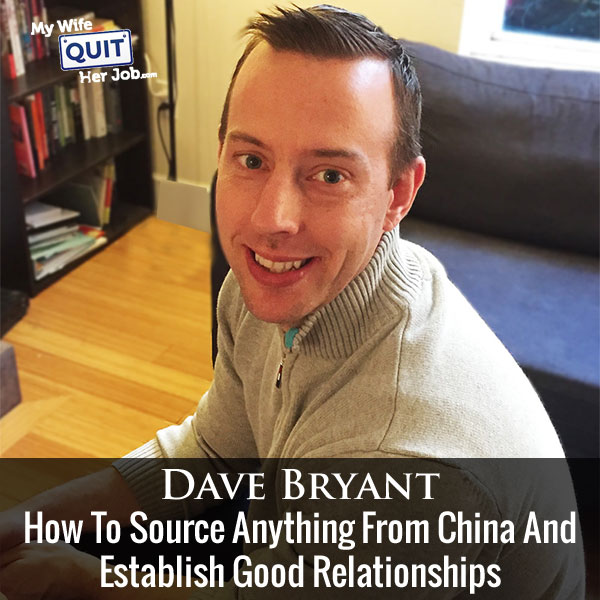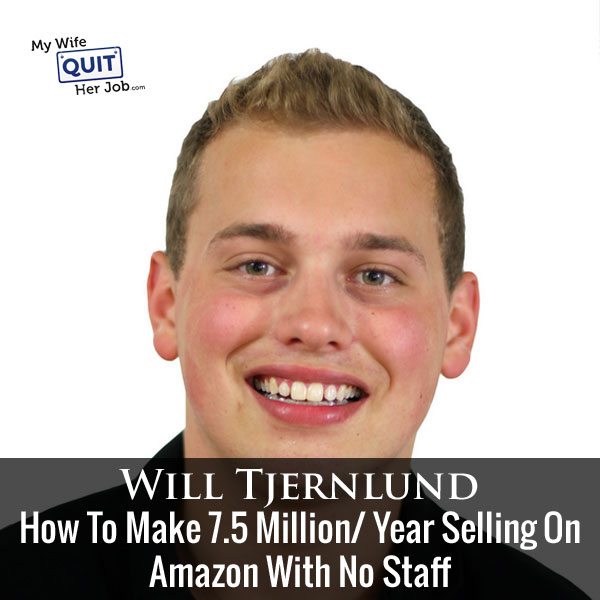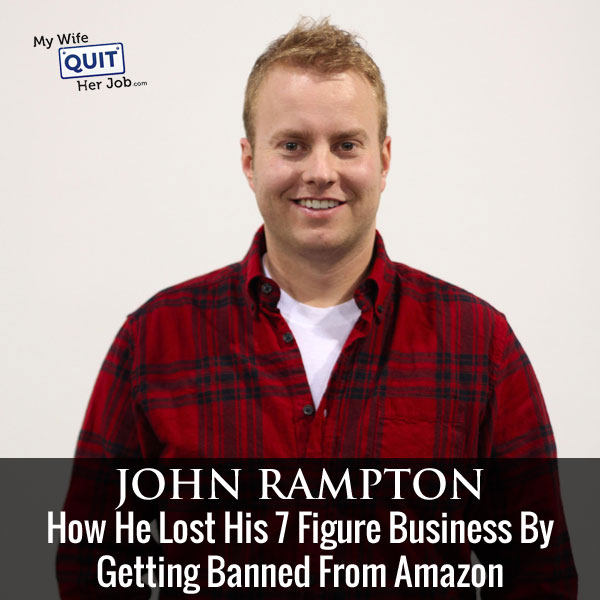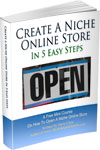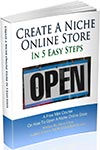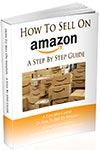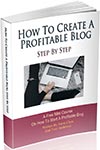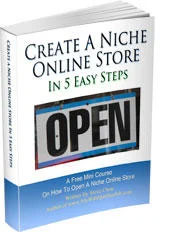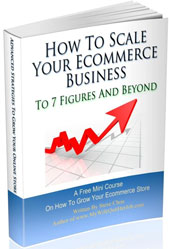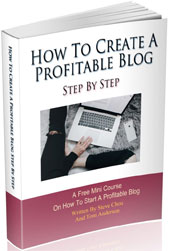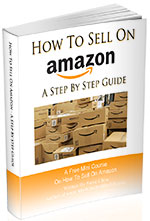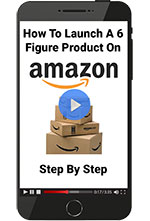Podcast: Download (Duration: 50:40 — 58.3MB)
Today I’m thrilled to have a very special guest on the show, Zach Smith. Zach is the founder of a company called Funded Today and he’s helped hundreds of startups achieve success with their crowd funding campaigns.
For example, he helped raise over 9.1 million to launch the popular travel jacket from Baubax. And chances are if you are on Facebook, you probably saw an ad for it because it was a pretty cool product.
In fact, this jacket became the most funded clothing project in the history of crowdfunding and one of the top 5 most successful Kickstarters of all time.
Zach is a real down to earth and easy going guy and today he’s going to teach us the secret to launching a successful crowdfunding campaign.
What You’ll Learn
- Zach’s motivations for starting his business.
- How much impact an agency like Funded Today can have on a campaign versus doing it yourself.
- How to launch a successful Kickstarter
- How to generate buzz for a kickstarter.
- Why Zach is able to scale a campaign so incredibly well.
- How to develop a large audience and reach many people.
Other Resources And Books
Sponsors
Bench.co – If you hate bookkeeping and accounting as much as I do, then why not use a service and contract everything out? Not only is Bench Accounting easy and affordable but you can click here and get 20% off your first 6 months of worry free bookkeeping.
Transcript
Welcome to the My Wife Quit Her Job podcast. We will teach you how to create a business that suits your lifestyle, so you can spend more time with your family, and focus on doing the things that you love. Here is your host, Steve Chou.
Steve: Welcome to the My Wife Quit Her Job podcast. Today I’m thrilled to have a very special guest on the show, Zack Smith. Now, Zack is the founder of a company called Funded Today and he’s helped hundreds of startups achieve success with their crowdfunding campaigns. For example he’s helped raise over $9.1M to launch the popular travel jacket from Baubax. Chances are if you are on Facebook you probably saw an ad for this jacket because it was a pretty cool product. In fact this jacket became the most funded clothing project in the history of crowdfunding and one of the top 5 most successful Kickstarters of all time.
Anyway, I met Zack at the import summit last year as we were both speakers. He’s a real down to earth and easy going guy. Today he’s going to teach us the secrets to launching a successful crowdfunding campaign. And with that, welcome to the show Zack. How are you doing today man?
Zack: I’m doing very well Steve, thanks for having me.
Steve: Yeah, give us a quick background story about how you started Funded Today and how you came up with the idea in the first place.
Zack: Yeah, I came home from serving in an LDS church mission and a guy that I knew had been very successful during that time. He was working in the investment industry and I said, “Hey can I come and mess around with you and just see what you are doing.” He said, “Sure.” And he took me under his wings. This was about a decade ago.
I started seeing what he did. He got excited about some of the stuff that I was able to do, because I was like a go getter hustling type of entrepreneur. He said let’s start a side business together and we did. That business became very successful, and we ultimately sold it a few years later. I took what I learnt from that and applied it as a business consultant.
As a business consultant I basically was doing internet marketing related strategies for all kinds of different clients all over the world. Well, one particular client who happened to live where I am from in [inaudible 00:03:02] in Utah area, said, “We can’t afford your rates but there’s thing called crowdfunding, Kickstarter.” Then he goes, “Have you heard of it?” Now at the time I actually hadn’t. They said, “Well how about we do this, we’ll pay you a percentage of all the money you raise and we’ll launch our new project,” it was called the RooSport 2.0, if you want to look it up, “We’ll launch our new project on Kickstarter and we’ll give you a percentage on it.” I said, “All right.” I was in a pretty good financial position at the time. I said, “Let’s try it out.” I did.
In the next 30 days, we raised $115,000 for a project that wasn’t even raising $2,000 a month on their website before hand. It changed these people’s lives. Now they have a multimillion dollar business that’s done really well. That story spread because everybody saw this little RooSport running wallet take off and raise six figures in 30 days on a crowdfunding site and a lot of people wanted to know how they did it. From there, Funded Today was born. We suddenly had 10, 20, 30 people and we selectively picked those clients out and we continued to raise that money. Then as you mentioned in the introduction, we raised money for the Baubax travel jacket, contributing nearly $5M of his $9.1M raise. The rest is history.
Now everybody’s heard about Funded Today. If they are crowdfunding a project, chances are they probably have heard of Funded Today or are working with Funded Today. We had a joke last year that if you had a project that raised more than a million dollars on Kickstarter chances are Funded Today was the company behind it. It was almost true, like literally 90% of the campaigns that did really were on Kickstarter; Funded Today was the driving force behind that success.
Steve: Dude that’s awesome. That first project, did you front the money yourself for all of the promotion?
Zack: That’s right, and we continue to do that for the most part. If your campaign meets our marketing success criteria we front all of the costs. We act as a mini-bank or a mini-lender. In fact I was speaking at the Utah Crowdfunding Conference yesterday and a lot of people talked about how they don’t have money and that’s why they go to crowdfunding.
If you don’t have money in your campaign successful meaning it’s raising money as a good positive ROI, you need to spend money. You should raise as much money as possible on your Kickstarter or Indiegogo campaign is live but if you only have ten grand, or 20 grand in your name, you might spend that in a couple days and you might raise $40,000 $50,000 $60,000 $100,000 $200,000 on that spend but now you have no money to spend and you have a successful campaign. That’s where Funded Today comes in. We can front millions of dollars with our essentially unlimited lines of credit for clients to raise them as much money as possible during that crucial window of crowdfunding.
Steve: So can you comment on some of the impacts you’ve had on some of your campaigns of them doing it themselves versus when you stepped in.
Zack: Yeah, I would say, and it’s becoming less and less likely probably 60% of the campaigns Funded Today works with have already started to raise money. Baubax travel jacket is a great example. He’d raised $4.5M or so when he hired Funded Today. But he was stalling, he was slowing down and he wasn’t making any money on the money he was spending.
He was making money on PR, on media and things like that but when he was actually spending money to make money on channels like twitter and Pinterest and Instagram and Facebook, he was losing money. He told me actually in a text message a couple … Because I’ve always been telling people it was $60,000. He’s like, “No I actually spent $150,000 to raise $150,000.” Basically he’d spend a dollar and make a dollar and that’s not profitable at all because you’ve got your cost to get sold and Kickstarter fees and other fees.
He hired us and obviously the rest is history. We were able to turn it profitable for him and for our company. I’d say a lot of people raise money and then they reach a trough, they reach a value. It’s peak and troughs. It’s a huge spike at the first and then a plateau or deadness. We come on and we revive those campaigns or amplify efforts from existing successful campaigns. That being said, we’ve had a lot of success with prelaunch now meaning we work with people right from the beginning. We’ve had even success where we had a campaign called Freewaves out of Orlando Florida.
Another one of our very first campaigns we run, they hired us with only 100 hours left and we were able to save that campaign. With a $300,000 goal we raised them closed to $200,000 in the remaining hours of their campaign because Kickstarter’s all or nothing funding mean if you don’t raise all the money that you set your goal for you don’t get any of it and they had only raised a $100,000 or $200,000 and they had a $300,000 goal.
They had to raise 100,000 more in the just the last 4, 5 days of their campaign. We took a risk on that one and we were able to be successful because they had moderate success before us. I mean a $100,000 is nothing to be ashamed of. Crowdfunding, they just didn’t have the right marketing in place to match the great product that they had and that’s where Funded Today came in to save the day.
Steve: That implies that a Kickstarter, a successful Kickstarter, is a lot to do with your own personal marketing as opposed to just kind of relying on Kickstarter’s exposure. Is that accurate?
Zack: That’s so true. I’d say 5 years ago, and this is an anecdotal story. I had a friend named Ryan Crabtree, everybody’s probably heard of the crabby wallet if you are a Kickstarter or a crowdfunding guru. One of the first campaigns that did really, really well for wallets, raised $325,000. To this day, if you talk to Ryan and I’ve got this because he came over to my home and chatted for a couple of hours. Literally he said he did nothing to raise that $325,000 and he showed me his dashboard. I’ve seen all the traffic and referral resources. Literally, it’s all just Kickstarter.
That was 5 years ago, 4 years ago, I forget how long but several years ago. Nowadays if you put your campaign on Kickstarter even if it’s a Baubax travel jacket quality, you probably won’t raise very much money if any if you don’t have the right marketing to match the great product. It’s just not that way anymore.
Steve: Okay, that’s interesting then. If you go just based on that, and it’s all your own personal stuff, why even bother going with the Kickstarter, why not just set up your own landing page and get leads and pre-orders that way?
Zack: Another great question because the power of the crowd is actually still there. The key is, Kickstarter is a paradoxical vehicle in the sense that you might set a goal of $10,000 but until you hit that goal of $10,000, the crowd doesn’t necessarily consider it successful. By leveraging your friends and family, we call the triple F, friends, family and fools. People who back your project before you launch, you’ll get a little bit of a kick from Kickstarter organically. If your project resonates with that it will stay in the top. Kickstarter has an algorithm for popularity and based upon the total number of pledges you have, and the duration those pledges came in, and the intensity propensity those pledges have, your campaign will stay popular.
The number is getting higher but I’d say, 200 or 250 backers, if you can get those backers within the first 8 hours of your campaign, you might be one of the most popular projects on all of Kickstarter. One of the most popular projects in all of Kickstarter that’s suddenly put your project in front of millions of people. Those millions of people you are not going to be getting anywhere else. That’s the power the Kickstarter still has and that’s the power of crowdfunding.
Steve: Okay, you just had to reach that certain threshold until it goes viral essentially.
Zack: Correct. Now if your project is one of those projects that doesn’t last or maybe it lasts a little bit but keeps bouncing around and maybe it doesn’t stay top 50 on Kickstarter, that’s where you need to create a sort of consistency. Consistency is best achieved through paid media. Paid media means spending money to make money. That way you can generate the consistency necessary to stay in the top of Kickstarter and then harvest those people organically who are visiting Kickstarter every single day.
Steve: Okay, I read some articles about Funded Today and how you are able to reach billions of people to get the word out on campaigns, and I was just curious what percentage of that is paid ads versus like your own audience and versus your own list?
Zach: It’s becoming more and more our own internal list because at Funded Today we believe it’s best to own everything you possibly can. I’d say 2 years ago, it was more spending money to make money. Now we have a cash back program that’s really cool, that we have thousands of people a part of. We have audiences that are segmented and audiences, perhaps in our emailing list.
We have audiences that are segmented in terms of a wallet, in terms of a watch, in terms of travel, in terms of luggage, in terms of shoes, socks, clothes, boots, pretty much you name it. With the exception being video gaming, board games which are a huge part on Kickstarter and crowdfunding. We have access to more people interested in those sorts of products than any other company in the world. Probably than anybody in the whole world.
Steve: Okay, this is just something you developed over time, right?
Zach: Yap, that’s right.
Steve: Okay, and do you have remarketing pixels segmentation also?
Zach: Oh yeah.
Steve: Okay, so is it mainly Facebook or do you use AdWords and some of the other advertising platforms as well?
Zach: AdWords, the short answer is anywhere we spend money, we … Anywhere we spend money and it’s generating a positive ROI or at least break even for us but making money for the clients, then we spend money. That depends on every single campaign; we’ve had a lot of success on Pinterest believe it or not, for campaigns that are really visual.
We’ve had a lot of success on Instagram. In fact we just got done raising money for a guy named Joseph May for a Breton backpack, and his Breton briefcase backpack raised $250,000. A lot of that was actually from Instagram. It really resonated well with that crowd, but yeah we absolutely spent a lot of money on Facebook as well.
Steve: Was that on Instagram ads or do you just have a very strong Instagram account?
Zach: We have Instagram ads and then we have an influencer network. Meaning famous people, A B C D list celebrities, a lot of B and C meaning their borderline becoming mainstream famous but they are really internet famous. They’ll post for campaigns in exchange for either cash, the product, et cetera, and they’re part of Funded Today’s Cashback Network. They post for our campaigns, the campaigns that resonate with their brand, in exchange for some kickbacks.
Steve: Okay. Let’s say I’m just a regular Joe schmo. I want to do a Kickstarter; can you walk me through the process and best practices on how to raise the most money?
Zach: Yeah. The first thing you want to do is have a long-term vision in mind. I believe you can launch really quickly and that’s what I love about Kickstarter but I’d say you want to give yourself 90 to 120 days. You have the idea in your head, okay. Now what do I do? Hopefully we’re talking about you already have a product, is that what we bare assuming, you already have something you want to launch?
Steve: Yeah, is it necessary to have a prototype first of all?
Zach: Kickstarter, I feel like validates you more and wants to give you more love when they know you have something. That being said and again I don’t know if the rules have changed recently because I do feel like they’re gaining more and more strict in terms of prototypes and for good reason. Look at Coolest Cooler, they haven’t shipped still, but if you don’t have a prototype you can likely launch it, if not on Kickstarter, for sure on Indiegogo.
I personally like to see most of my clients with prototypes, and here’s why, you can ship those prototypes back and forth to all the different media and journalists and do PR tours before for prelaunch. Getting all these people excited about it and then they’ll post for you through embargo press the day you launch.
Steve: Okay, let’s assume we have a prototype then.
Zach: Okay, you have a prototype. Let’s say you are 120 days out. The first thing you want to do is you want to go on a media tour, and a media tour, you can do this by yourself or you can do this with an agency. We like to do a little bit internal and a little bit that we outsource, but the thing is about press it’s very political, it’s very much about who you know, and it’s very much about diversifying. A lot of people are like, “I love PRmediaNow or I love Proper Propaganda.”
Those are both pretty good firms, the issue is they may or may not work for you. Press has hit a mess and that’s why Funded Today doesn’t rely on press but if you’re going prelaunch, it make sense to get as many press people involved because they might know somebody at The Wall Street Journal and he might know somebody at the New York Times, and someone might know somebody at TechCrunch. If you have all these people helping on your campaign between then all, you actually might land a lot of press, but if you just …
Steve: If you know nobody then is there a particular strategy? Would you recommend hiring someone or what would you do?
Zach: If you know nobody and you have 120 days before your launch, why not spend the first month trying to figure out how to get press for yourself. Journalists love somebody that’s really passionate about their brand. It’s like the entrepreneur story; we even talked about with our paid media advertising. A lot of our advertisements we call them hero shots or founder shots or product shots and it’s basically if you invented a watch, it would be you wearing the watch, smiling looking at the camera or something. We find those do really well because people are like, “Oh look, this guy invented the watch and here’s a picture and here’s him.”
The same philosophy or behavioral psychology works with press as well. If they see that you are the one passionate about your product and you are then one literally emailing and trying to win a press, I think they resonate with that better sometimes than even having an agency. That being said, agencies sometimes have relationships, they don’t care about the, “Oh he’s the founder, he’s whatever.” They won’t necessarily give that more press events, they might just be like, “Oh yeah I know this guy, I’m going to post for this guy because we have such and such a relationship.”
Steve: Okay, in the very beginning, did you just go through and find names of editors who write about this stuff and just cold contact them?
Zach: That’s right yeah. I developed templates, I developed follow up. One of the best tricks and I teach this to every single person that works for our company is, “Hey just following up” I send them an email, a really good pitch on whatever the product might be, and then I wait 24 hours and if they haven’t said anything, “Hey John, hey Steve, hey Bill.” Whatever the name is, “Just following up.” That’s all I say.
You’d be surprised what the just following up email does, “Oh hey sorry I missed that, now I got to [inaudible 00:15:52]. It makes you look like a real person, it makes you look genuine, it makes you look like you are passionate about your product, and it makes it look like you weren’t just sending millions of people a pitch email. That you are actually passionate about following up and getting in touch with somebody who can help to write about your product.
Steve: Okay, sounds good, sounds good. Do you use any software to do this or is it just use a calendar?
Zach: We originally had Cision, we originally had Meltwater and these are big. I think they are the best types of PR media software you can have. It basically keeps an updated database of everything, but once you use those for a while, you have all the contacts and it doesn’t make sense to continue. At this point we have thousands and thousands of names, emails, phone numbers of pretty much anybody who’s ever written about crowdfunding. Our database is very extensive in the sense of who we know and our relationships are a lot better too with a lot of the journals and press that we work with.
Steve: Okay, let’s you’ve gone around; you’ve got a couple of press people on your side, what’s the next step?
Zach: The next step is to be very clear about your launch date. You want to make sure the press know to write about you on … Let’s say you are launching on today, today at 5 o’clock PM. I would like you to drop an article anytime within the first 24 hours after Friday April 29th at 5 o’clock PM Mountain Standard Time. Can I embargo you to do that for me Steve?
Steve: Okay.
Zach: Yes great, okay great. Here’s a couple of things, here’s a couple of images, here’s our media kit, here’s a few things I think you should see. Make sure your use this link, make sure you give them a link to your Kickstarter page because you’d be surprised how many times you get big press and they don’t include a link. It’s just devastating if they don’t link out to your project because now you get all these press and exposure from a huge site, even like The Wall Street journal and they don’t link to it. You get 500 clicks and you are like, “Oh my Gosh, I have only 500 clicks form The Wall Street journal. Well, it’s because they didn’t put a link into your article.
That’s the most important thing you can do with the press, is make sure you coach them, because for some reason it seems like either they know not to do that or they don’t like linking traffic. Whatever their strategy is, they don’t like to include a link and make sure you get that in writing that they’re going to put a link in it. Give them a link to write.
If your campaign hasn’t launched yet, one thing people don’t know and this is just a little bit of inside information, you can use the preview link on Kickstarter and that will transition into the real link. You’re like, “What’s my link, what link should I give them?” Just give them your preview link, and then that preview link will transition into the full link once your campaign goes live so you won’t have to be scrambling last minute to give all your press and journalists a link.
Steve: You mentioned media kit, what goes in that?
Zach: Media kit is your hero shots, your images of your product, a media PR, a press release, a contact information, you’re …
Steve: Okay, that includes videos of the product and stuff … ?
Zach: For sure.
Steve: Okay.
Zach: Whatever you want to say and I can give some example of some media kits as well if you want those after.
Steve: Yeah absolutely I will link to those. Cool, we got that set up, we’ve launched our campaign, we got some initial press, then what?
Zach: The other thing I would do if you haven’t and we’re still talking maybe, 90 days out now. You’ve got your press embargo, you got all that lined up. Start networking with other people that ran Kickstarter campaigns. Let’s say I’m running a boot campaign for some really nice high-end fashionable boots. Let’s say you are a person who launched a sock campaign that had 5000 backers a year ago.
“Hey Steve, I’m launching this boot campaign and I fell like your socks are their perfect compliment, would you mind if I linked out to your socks, like a week or 2 in? I’ve already got X and X and X lined up for press, I’m probably going to have thousands of backers here within a week or 2. So 2 or 3 weeks into my campaign, I promise I’m going to tell all my backers about your boots which will give you all kinds of traffic to your website since you probably are not making as much money anymore on your boots because you are not on Kickstarter anymore.
In exchange for that I’m launching on at 5 o’clock PM on April 29th, wondering if you might tell your 5000 backers about these awesome boots I’m making. Do you think that’ll be a good compliment?” “Yeah, I’d love that” “Okay great. I agree to post for you on May 17th at 8 AM to my list of X number of backers at that time.” Do that with 100 people …
Steve: Just good old standard legwork marketing.
Zach: Yap, You’ll be surprised what that does and to give you a hint what those does, I raised $126,000 in less than 48 hours for the Perch. Which is now called the UVO laptop stand. We did this also with The Greatest Pants, McMacular, that’s on right now, raised them quite a bit of money. We did this with the Edge Desk. The guy that was the main marketer behind Furby and Cabbage Patch dolls, and that campaign raised hundreds of thousands of dollars as well. Those are just three examples. We do this every single time we have a good product launch lined up. One of the ones that comes to mind…
Steve: Just as an example since I actually know the McMacular guys. For their pants, who did you reach out to complement their Kickstarter?
Zack: That’s the advantage of Funded Today again not tooting my own horn so much here. We have literally probably 1000 people now that have thousands and thousands of backers that are part of Funded Today’s Network. Basically they are contractually incentivized to post for projects because that’s how they got their initial kick. “Hey, to pay it forward. We helped you raise money 5 months ago. Now it’s your turn to help this person raise money.”
We have lots of people that do that. You can see the spike on McMacular if you look at the graph. Some of the better spikes are Edge Desk or UVO, the purchased laptop stands. It just depends on how much pre-launch is in place. Plug Phones is another good example that’s live on Kickstarter right now that Funded Today started with from the beginning.
Steve: If you don’t have your network, it’s just that your ability to cold call and convince these people, incentivize them to just help, right?
Zack: Exactly. It’s about good old fashion hustle.
Steve: Got it.
Zack: It works really well so you should always do that because otherwise, how are you going to build your email list? You don’t have money to build an email list. You don’t have any connections. It’s just about building those connections and helping people see the value of your product and leveraging as much as you possibly can to get people excited to help you out down the road because you might not have much to offer until then.
Steve: At this time, are you also reaching out to bloggers and influencers as well?
Zack: Yeah. That would be the same part of media tour. I was talking bigger names like Wall Street Journal, TechCrunch, Mashable, but absolutely reach out to smaller sized blogs. Even a blog like yours which is a great size blog might be a good person to reach out to for a particular type of crowdfunding campaign.
Steve: Do you have to give away the product typically do you find?
Zack: It just depends on what the person wants. I’m all about trying to find the right angle and right pitch to make people want to do it for the good of the person or the good of the entrepreneur just because they love the product. Sometimes the initial pitch will be more philanthropical, but then they’ll come back with, “Yeah. I’d love to do that, but can I get the wallet too?” “Yeah, sure I can give you.” You know what I mean? That kind of thing.
Steve: Sure.
Zack: Then you are getting a lot of value for somebody posting for you or write an article about you for very little cost to yourself.
Steve: I was just wondering if you could share some techniques to get a person’s attention in the first place, because I get pitches all the time and most of them are bad.
Zack: What pitch has resonated with you? Do you ever have somebody where you are like, “You know what, that’s actually good. That resonated with me.”
Steve: Usually it’s much more personal where they actually know a lot about me.
Zack: I love that.
Steve: To start with. Then they’ll quote something that they like and what not. It’s just very subtle.
Zack: You are so true. We definitely have a formula for exactly what you described. When I was on Andrew Warner’s Mixergy, I talked about that as well where basically, how to resonate with someone? It really is getting to know what they write about, what they’ve said. Show something that you’ve read from theirs a year ago and then quote something that they wrote a week or two ago.
Maybe in that first pitch you’ll say, “Hey. I just wanted to hi. Let me know if there is anything I can do to help.” Then maybe wait another week and say, “Hey. I just want to follow up. Loved the article you wrote this week. By the way, my name is Zach Smith. I’m launching this product called the Edge Desk and so and so about it. I think it might be a good fit, but I’m not quite sure. Wonder if we might chat about it for two or three minutes? You got a second.”
Steve: I just want to take a moment to thank Bench Accounting for being a sponsor of the show. I love running my ecommerce store, but you know what I hate doing the most? Book keeping, seriously, keeping track of receipts, expenses and especially inventory costs are easily the worst aspects of entrepreneurship hands down. Here is where Bench Accounting comes in.
Bench is an online book keeping service that specializes in ecommerce businesses. They are experts at handling all ecommerce related reports whether it be from Amazon, Shopify, Big Commerce, Stripe, you name it. All you got to do is signup and they will pair you with a team of dedicated book keepers who will handle everything for you.
No more data entry, no more data crunching, no more headaches. Plus, it’s reasonably priced. The best part is you can get 20% off your first 6 months if you got to Bench.co/Mywifequiteherjob. Once again that’s Bench.co/Mywifequiteherjob to get 20% off your first 6 months. Now back to the show.
Steve : You know actually, come to think of it now the people that have resonated with me the most don’t go for the kill in the first email. It’s a gradual thing over several weeks so to speak.
Zack: Exactly. It really is about … Maybe they’ll even know that you’re trying to get something, but you got to just be patient. In life you can get everything you want, but you got to realize it doesn’t all come immediately even though we are kind of more entitlement, gratuitous generation. If you’re just a little more patient, you’ll find that you resonate with somebody way more than everybody else because like, “Yeah. This guy emails me every single week, but I can’t see what he is up to. Who is he? I kind of know what he’s doing here, but man, why doesn’t he ask me?”
Steve: “It’s this dude in Utah, he won’t stop emailing me.”
Zack: We joke about it at Funded Today. If you ever want to get hired at our company, persistence is key. We’ll literally ignore your first 4, 5 emails if you’re trying to get a job with us because we want to see how much you’ll hustle because we know how hard it is to get press. We know how hard it is to get outreach. We know how hard it is to lineup people to do things. If you can’t stay persistence with us, we don’t want you working with us.
Steve: That’s why you did not answer me at first.
Zack: I’m sorry. It just shows, Steve … This shows how persistence he is.
Steve: Who’s that annoying Chinese guy who keeps … We got press. We’re doing some legwork here to get some people to help promote. What else do you guys do?
Zack: Once you have all of that lined up, now it comes time for product validation. Product validation happens whether or not your meet our marketing success criteria. That’s essentially the first 1 to 7 days of your campaign where we are running paid media, testing, using statistical significance and P values to figure out what audience is going to resonate? What demographic is good for your product? How much we can project that we’ll make across the life of the campaign. Essentially we’ll stop all efforts and we’ll walk away from a campaign if we can’t achieve a statically significant long term projection for a campaign meaning it is not all the way positive for our company.
We’ll walk away from a campaign and say, “This is probably a product you should abandon. This is a product you should pivot upon and here are the reasons we think and here are the things that we are finding from everybody based upon the feedback and surveys and all the stuff that we are doing, or this is a product you need to walk away from. This isn’t a good idea and the market place has spoken.”
Steve: It’d be nice to figure out before the price campaign and all that stuff, right?
Zack: A lot of campaigns … Like I said, with 60% of our campaigns, we are not doing all the stuff I talked about. If we were to do the pre-launch for your campaign. This isn’t something we would do for everybody. You’re going through a 21 point checklist to see if you qualify based upon everything we’ve learned. We might still be wronger. If we are wronger, it sucks. We’ve only been wrong once where we picked something pre-launch and it wasn’t successful. Everything else we picked pre-launch has raised 6 figures or more, most of the time high multiple 6 figures.
If we are wrong on a pre-launch value, you’re absolutely right. That’s why we love the product validation so much, but we have to take plans on pre-launch now because some of them have really good ideas that are based upon the successes that we have had on past campaigns. We can leverage a lot of the data and information that we know that work for another campaign and reasonably project that it will do well as well.
Steve: Walk me through this validation process.
Zack: Again, are you a pre-launch campaign? Are you a campaign that’s already launched?
Steve: Let’s do a pre-launch. Let’s do it as if you were doing it from scratch yourself?
Zack: Let’s say you’ve got something like Baubax travel jackets since we used that an example. The differencing point with yours its features are different. It’s the same kind of thing, but it’s a Baubax travel jacket, but it’s got different features. We’d immediately probably say that’s successful for us. Here is why. We have all the information and everything we did to raise the $9.1M for the Baubax travel jacket. That’s a gimme. You have something like that, we’ll probably …
Steve: Let’s get something that’s not necessary gimme. I just want to know how you run your Facebook ads to get these metrics.
Zack: Because we have more information and more Intel on nearly every single segment that’s ever been ran on Kickstarter so whether it’s pants, shoes, luggage, wallets, watches. I’m just trying to think of some random things … 3D printers. What else have we raised money for on Kickstarter?
Steve: You know what I’m getting at. Let’s say its fully different thing that you’d never had of like some random gadget and you want to get an idea if whether it’s going to work or not. You mention you run Facebook campaigns and based on those metrics you can determine and project what you think it’s going to make. I just want you to walk me through that process.
Zack: This is a person with no assets of their own.
Steve: With no assets of their own. Let’s say they have enough money to run Facebook campaigns. I want you to do it as if you were you with unlimited resources.
Zack: Let’s see.
Steve: Would you put together like a Facebook ad campaign and just target a whole bunch of different interest groups?
Zach: If I don’t have any resources at first, I’m going to struggle. The first thing you want to do is you want to contact a campaign that is somehow similar. Let’s just use the boots and soccer analogy again. Even though it might be something completely different, but I’m sure if it’s completely different, there is something similar that has been crowdfunded before that you can reference. That’s what you want to do. In fact a great example right now is our client Bryce Fisher. He has a company called Raveon, and Raveon raised millions of dollars for their heated jacket.
Right now they are running a second campaign, they have already fulfilled on the first one, and he’s done really well. In fact he got it funded within the first 24 hours. This is all him too. We are not even working on the second campaign yet. We will be working on it in a few more weeks, but he did exactly what I’m going to describe. He looked at his existing list of Raveon backers, and that’s how he began to run, targeting on Reddit, Instagram, Pinterest and Facebook.
He actually, because he thought, and this is an outdoor product, this is a sleeping bag, a heated sleeping bag. It’s similar but is different enough. He found that his list of Raveon backers. All the, they called it a lookalike audience on Facebook, if you want to talk about Facebook specifically. He found that actually, his Raveon backers were more fashionistas, more fashionable people, more not outdoorsy type, and they didn’t convert well.
His strategy is exactly what you want to do. Let’s say you are not Bryce, let’s say you don’t have a past campaign. You reach out to someone like Bryce, and you say, “Hey Bryce, I got this heated sleeping bag thing, I don’t think it’d going to compete with you, but I think your list of people would be the ideal fit. Would you mind letting me create a pixel, or create an audience.
I mean you don’t have to give me the names; you don’t have to do anything like that. I promise I will never email, I will never sell, I will never do anything.” And make sure where you live up to your word there because you’re getting into some crazy stuff there. “If you do that for me, I will do whatever.” You know, whatever you want me to do for me, buy him lunch, give him money, whatever works.
Then you use that list of people to start your initial targeting, that’s how I do it. Otherwise if you are just trying to randomly figure out what’s going to work, I don’t really think you are going to be able to make Facebook or Instagram or Pinterest. I know you won’t because we have never been able to make it work very well. You have to have an existing list of people that have backed something similar in order to be successful on paid media.
Steve: Okay, did you have a chicken and egg problem for some of your first campaigns in that respect?
Zach: That’s a great question. I had an advantage because of my 10 years of business consulting. I had access for the real sport. I had access to email list, lookalikes and audiences that I could start with to build out additional audiences, in skill and find similar audiences, so that I could grow my reach and my potential to scale.
Steve: Okay, what it sounds like here then is that you guys actually don’t do that much audience research or random exploring on Facebook actually to get the audiences, is that accurate?
Zach: Well it’s accurate in the sense we are not just randomly going crazy on Facebook with no data. That being said, we are taking existing things that we have, based upon all the 100s of things that we’ve run, and we are finding more segments that match up and pair nicely with what we have.
Steve: It always starts with the basis of something.
Zach: Exactly, I just don’t … You might be able to, but I have never been able to be extremely successful going with nothing.
Steve: Okay and when you are creating your Facebook campaigns, you will start with a lookalike audience and it will branch out to known interest and audiences that you are fairly confident will work right off the back.
Zach: That’s right.
Steve: Okay, when you are running these campaigns, and you mentioned that you front all the money, right? You have to make this work, and during that first 7 days, what are your metrics determine whether something is going to work or not?
Zach: The most important thing we look at is something called earnings per visitor, or earnings per view, and every single Indiegogo Kickstarter campaign allows Google analytics to be hooked up to it now, and it’s a very simple metric. It’s for every single person coming to my site, how much money I’m I making. We like to see that number greater than $2.
Steve: Greater than $2, what is so special about that $2 number?
Zach: Not anything necessarily special, it’s just that’s what we’ve seen as we’ve grabbed the medium from the thousands of campaigns that we’ve worked with. That’s what we have seen the majority of campaigns have a greater than $2 number to be successful.
Steve: Okay and one thing I forgot to ask you in the beginning is you guys take a percentage of the money that’s generated right?
Zach: That’s right, from wherever we come on.
Steve: Is that typically on the order of; you said 35% I think before we started recording here. Okay and based on that number, $2 is something that you will determine that would be profitable?
Zach: Exactly, $2 are cases to either be break even or profitable. Obviously we want to make money, if we’re break even and raise money for the client, sometime we will take on a campaign we are not even making any money, but it’s raising a lot of money for the client, and it’s making Funded Today look really good. Another campaign, not another campaign, 10, 20, 30 more campaigns might approach us after hearing about Funded Today working with that campaign, and we might be profitable for those campaigns. It’s about customer life time value in that sense.
Steve: For your own business, do you make any of these clients sign anything that they’ll help you; you are allowed to share their results after the fact.
Zach: Yeah, every single client agrees to give us a testimonial for if we are successful. They agree to give us a video testimony, and every single client we work with that were successful for. Successful means passes the 1 to 7 days of due diligence and product validation. If they are successful they put a badge on their site. These campaigns like Baubax travel jacket, I looked at the Google analytics 2 days ago, because I was talking with [inaudible 00:36:00], and he still had a thousand five hundred people sitting on his site, and it’s like 5, 6, 7 months ago that that happened.
Just imagine the amount of visitors and eye balls that come, and see that Funded Today was the reason that Baubax travel jacket raised so much money. We get a lot of traffic and visitors, and then coupled out with 500 campaigns that all Funded Today badges, it gets to be a lot of traffic coming to your site hearing about what you did.
Steve: Your business has grown based on word of mouth essentially, is that accurate?
Zach: Yeah, that’s exactly right, word of mouth in the sense of the internet, the viral spread of information.
Steve: Okay and you are running these Facebook campaigns, and can I just get an idea of how much you would start with your bids, and how you scale it up?
Zach: It’s always to test for statistical significance. How much we spend, how much we scale, I literally base everything on statistical significance, and we always have. Statistical significance is just about looking at your end, your big population and then your little end, your sample population, and finding the right number of visitors you need, and the right number of conversions you need, and once you have that right, math doesn’t lie, it’s a pretty amazing thing because …
Steve: Walk me through an example if you can with some numbers.
Zach: Let’s say, to break it all down, let’s just use $1000 as an example maybe. Let’s say you spend $1000 and let’s say it raises $10,000 okay? $10000.35, and let’s say on that $1000, I don’t know. What are you getting clicks for?
Steve: Under a buck.
Zach: Under a buck okay, let’s say they are a buck each to make it easier. You spend $1000 that’s a thousand clicks, a thousand clicks raise you $10000, and let’s say the deal is 35% and so in that sense Funded Today would have made $2500. That’s a pretty good return; we look at the earnings per visitor. Earnings per visitor is really simple. You send 1000 clicks, you raise $10000, so what is your earnings per view, $10, that’s 5 times better than the two. In terms of statistically significant, you wouldn’t have to spend $1000 and get 1000 clicks, and raise $10000 to achieve statistical significance.
Statistical significance could be achieved spending much less in this example because it was … This example you gave it so profitable, you could probably have achieved hat on a $250 spend, and this particular example. From that point we would tell the client, “Okay, looks like you passed the test, everything is statistically significant.” They’d see the results because their campaign would have been raising a lot of money, and then it’s just scaling from there.
How do we scale it from there? We simply look at the audience size that we were targeting for that particular group, and we look at how many days left on the campaign to make sure that we are maximizing that reach and making sure every single person within that audience is going to be targeted within the 30-60 days, or however long what we have left on the campaign, and then we just scale according to time left on the campaign.
Steve: Do you create multiple creative’s; do you test headlines creative’s and all that sort of thing?
Zach: Yeah, every single thing like that is being tested, we start with, it just depends. I usually start with 10-20 different creative, images adcopy. Then we look at how all those perform across smaller segment sizes. We pick the best one and we scale that one exponentially.
Steve: Okay and in terms of frequency, are you aiming for everyone in that particular audience to try see that ad once?
Zach: At least yeah, generally we don’t like to go more than 2.
Steve: Okay, not more than 2. You make your calculations on what to bid so that you cover what you think you are going to cover within that certain time period.
Zach: That’s right.
Steve: Okay and one question I did have, and this is a little bit unrelated …
Zach: Oh sorry, and just to throw in that, that’s just one audience. Now we’ve got that working. The entire length of the campaign, we are testing out new things. We might only have 5 additional campaigns but we are testing out new audiences that we haven’t yet tested out just because we’ve been testing out hundreds of other audience along the way. The idea is to eventually have hundreds if not thousands of audiences turned on that are all converting profitably and that’s how the scaling works.
Again following that same principle though of testing … Just because you passed the product validation for that 1 to 7 days doesn’t mean we are not validating more and more audiences. We just want to make sure we validate our biggest, strongest audiences first and scale more audiences throughout the rest of the campaign.
Steve: The following question for that was, is Facebook like your primary advertising campaign or do you find equal success with Google and Pinterest, Instagram?
Zach: I would say…
Steve: Is it just all depends?
Zach: Yeah. It all depends. Again it’s a bad answer, but wherever we can spend money to make money, we’re going to pretty crazy. On [inaudible 00:40:48] Facebook did horribly, Instagram did extremely well. Weird, I don’t know why.
Steve: Interesting, the same company and very similar.
Zach: [inaudible 00:40:57] watches Pintrest did really, really well.
Steve: Pintrest ads. What is the different … I’ve always been curious about this. There is a whole bunch of different crowdfunding sites like Kickstarter, Indiegogo, GoFundMe. What are the differences?
Zach: The biggest difference … GoFundMe I would say is more for social or personal kind of causes. I get I’m not on GoFundMe a ton. We’ve never actually raised money on the site, but GoFundMe is more for, “Hey. I’ve got cancer or my dad just died or I need to pay for a funeral or I’ve got to go on this trip or whatever it is.” It’s just like the name sounds, GoFundMe. Give me money for this, give me money for that. I’d say it’s more social philanthropical kind of thing.
Indiegogo, Kickstarter are definitely competitors. The stuff you see on those 2 sites are pretty similar. Kickstarter has a better audience in the sense that if you are on Kickstarter and you are successful, you are going to see that Kickstarter helped you out quite a bit. For one reason or another, the way Kickstarter’s website is set up, the way it converts; the way people understand the site. If you’re successful on Kickstarter, you are going to see multiple success: success upon, success upon success. It’s that snow ball effect. On Indiegogo, it’s going to require much more of your own work.
That being said Indiegogo is like awesome. They’re nice. They’re kind. They take care of you. I love Kickstarter, don’t get me wrong, but Kickstarter’s model is more like, “Hey. Don’t touch this. We’re good. We’re great, but we don’t really want to be bugged or talked to.” It’s kind of their strategy. Again this will probably get me in trouble but I don’t even know if should I say it, but I’m going to. I didn’t come up with analogy so with that disclaimer.
We love Indiegogo too and we love Kickstarter. We love both the sites. Indiegogo, they have something where if you are really successful they’ll put you on their newsletter. We get a lot of newsletter features because we generate a lot of pledges. That increases the go-go factor which is a factor that Indiegogo uses to keep track of how well campaigns are doing. It’s a combination of pledges, traffic visitors, how quickly all those pledges came, et cetera and the length of time. Indiegogo is like the ugly girl who always watching, who’ll do anything for you, but you are always like, “I don’t know.” Kickstarter is like the beautiful, sexy, supermodel who you’re never going to have, but you keep trying because she never completely turns you down.
Steve: Let me know if you want to cut that out before this goes live.
Zach: I don’t know. Again, I didn’t make up that analogy. That analogy is from … I forget who it’s from, but I’ve always remembered it. To be honest, it’s true.
Steve: There is no reason not to launch on both. Is there?
Zach: You don’t want to launch on both the platforms at the same times. What I like doing it and we find like 60, 70% of our business comes Kickstarter just because that’s where we started I think. We are starting to get a lot more on Indiegogo because now we are their number one partner, and they have this cool little partner page that features all the partners. Because we are number one I think a lot of people see us and come and try to hire us. That being said, 60% of our clients are in Kickstarter.
If we are successful on Kickstarter, Indiegogo has this awesome thing that Kickstarter doesn’t have and I don’t know if they ever will or they are not wanting to do it. It’s called In Demand Funding. After you campaign ends, you can continue to raise money and just extend the shipping or manufacturing date on Indiegogo. Let’s say you plan on delivering in three months on Kickstarter, you might say, “Hey. You missed us on Kickstarter, but you still want to get the product. Well we’re going to be delivering in 6 months if you want to still get it here.
We allow pre-orders on Indiegogo in demand. We have a lot of success going in demand. We have clients we work called Meater which is a smart thermometer. We’ve raised them I think probably more than a million dollars more in demand. UsBidi, a really good campaign that’s raised way more than it raised on Kickstarter in demand. The BetterBack, Katherine Krug, she’s raised quite a bit of money in demand. She’s one of our clients.
Steve: That’s interesting. I wonder … Because there is a sense of urgency with the Kickstarter. Doesn’t that get lost with in demand?
Zach: You know what, that’s what interesting. I think there is still some kind of social element. You get to bring that big number that you raised on Kickstarter or Indiegogo. You get to have that big number in front. People are like, “This must be successful. It raised a million dollars. It raised 3 million dollars. It raised 5 million dollars.” Maybe all that numbers and all the metrics and the social elements, either you lose a bit of the scarcity perhaps. Maybe that creates the sense of people wanting to buy. We’ve found convergence to be okay in demand as well.
Steve: What is like a typical conversion rate for a good campaign?
Zach: Typical good conversion rate for a good campaign … I got Curtis here with me. Curtis, what do you think?
Curtis: From direct, online 3 to 5.
Zach: 3 to 5 percent he says from direct traffic.
Steve: That’s pretty good. Then we just say the average is somewhere around 2.
Zach: Average is like 1 to 2. What about from paid media? Paid media is about 1 to 2, but average for a good campaign is going to be 3 to 5. It does depend on price point as well.
Steve: You mentioned a whole bunch of successes that you’ve had in the past. Some of these were like a year or 2 years ago. How has the crowfunding landscape changed over time?
Zach: The biggest thing that’s changed is you can’t just put a project on Kickstarter or Indiegogo and expect to make money. You definitely have to do a lot of leg work, a lot of stuff upfront. That being said, by doing all that good stuff up front, you have a chance to raise way more money than you ever did in the past. That’s the biggest thing. I think it requires a lot of work upfront.
Steve: It sounds like a lot of your tactics are just social engineering in a way, just good old fashioned leg work.
Zach: That’s right. All we’ve done is taken that good old fashioned leg work and scaled it.
Steve: Then also kept these contacts in place so that you have a base for everything that you’ve launched now.
Zach: Absolutely.
Steve: Zach, I learned a lot today. Where can people find you and pitch their ideas? I understand you don’t get that many pitches on a regular basis. If someone wants to contact you or your company, where can they find you?
Zach: Best place to get us is on Funded.today. It’s not .com. it’s Funded.today because we get your project funded today, so Funded.today. Then on Funded.today, you can click on the Do I Qualify. Let me see what it’s called now. I think it’s Do I Qualify. Learn more … It’s Learn More now. If you click the big green Learn More About on top fold, click and then it will take you to a page. You can watch that short two or three minute video. Then click, Finally Do I Qualify?
We go through a list of questions that we want to know about you, how did you hear about us? Generally within 48 hours we put you in touch with a client specialist. Client specialist … You are probably smarter than me in terms of the daily grind. I just talked to Curtis about a few numbers because he is on the scene so much more than me. They are basically crowdfunding consultants who talk to you about your campaign, talk over what the process is going to look like, answer any of your questions, and determine if what we do is going to be a good fit for your campaign or not.
Steve: Are there any obvious signs that you might not be a good fit?
Zach: I think if you come to us and if you have raised … We have this a lot, believe or not. If you have like 1 to 5 pledges and you’ve been on the crowdfunding site for 2, 3 weeks, you might not have a good idea. We see that a lot. You’d be surprised how many people are like, “I just need good marketing.” I just don’t necessarily know if I’d buy that. That being said, even on cases like that before where we’ve actually turned a campaign that had hardly any backers into 100,000 plus campaign.
If you believe in your idea enough, we should absolutely chat.
Steve: See that’s the thing. I tend to think that a lot of it does have to do with marketing because a lot of people they are good at inventing but then they suck at doing the legwork.
Zach: You are so right. Sometimes when you see 1 to 5 people, you know they didn’t even talk to their friends and family. Its like, “You didn’t have like 5 friends who wanted to throw you money.” That being said, you are exactly right. We talked to inventors all the time that are scared of the internet or have no idea how to even do anything or how they got their Kickstarter page put together in the first place. There absolutely is that. That’s not bad.
We love those kinds of people because as crazy as it sounds, I’ve basically invented 2 things my entire life. I pitched everyday, 60, 70 times. You’d think I’d more inventive, but sadly the creative juices don’t necessarily flow from me at least in the sense of products. I think I’m more creative in the sense of marketing and how to figure out new ways to raise money for people.
Steve: And social engineering. Yeah totally.
Zach: I wish I was more creative because I love the things we’ve brought to life. It’s so fun like right now I’m wearing an original reign watch. I have silver socks on. I’m wearing Wolcox boots. I’ve got McMacular pants. I’m wearing a silver shirt. I’ve got premium underwear from Miguel. It’s like literally everything I have on is from something that Funded Today helped to bring life. It’s exciting. I love to tell those stories and I love to see that we’ve created all these jobs and helped all these entrepreneurs live the life of their dreams. That’s what makes Funded Today so amazing.
Steve: I just want to add a little tit bit since … Is that when I first met you it was just very easy to talk to you. I can kind of see how you are able to reach out and establish great relationships with people. It’s just a talent I guess.
Zach: Thank you. You are very kind. I could say the same thing about you, but you do it 10 times better than me.
Steve: There you go with the praise. It’s not going to work this time buddy.
Zach: I mean it.
Steve: All right man. Hey, thanks a lot for coming on the show man.
Zach: I appreciate it Steve. Thanks for having me.
Steve: All right. Take care
Zach: Bye-bye.
Steve: Hope you enjoyed that episode. Now crowdfunding wasn’t around when I first started my online store, but today it’s definitely a viable way to validate your product or fund your first production run. If you do decide to crowdfund a campaign, there is no one else I would ask except for Zach.
For more information about this episode go to Mywifequitherjob.com/episode123. If you enjoyed this episode, please go to iTunes and leave me a review. It’s by far the best way to support the show. Please tell your friends because the greatest complement that you can give me is to refer this podcast to someone else either in person or to share it on the web.
If you are interested in starting your own online business, be sure to sign up for my free 6 day mini course where I show you how my wife and I managed to make over 100K in profit in our first year of business. Go to Mywifequitherjob.com for more information. Sign up right there on the front page and I’ll send you the course immediately via email. Thanks for listening.
Outro: Thanks for listening to the My Wife Quit Her Job podcast where we are giving the courage people need to start their own online business. For more information visit Steve’s blog at www.mywifequitherjob.com.
I Need Your Help
If you enjoyed listening to this podcast, then please support me with a review on Apple Podcasts. It's easy and takes 1 minute! Just click here to head to Apple Podcasts and leave an honest rating and review of the podcast. Every review helps!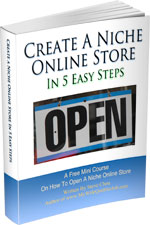
Ready To Get Serious About Starting An Online Business?
If you are really considering starting your own online business, then you have to check out my free mini course on How To Create A Niche Online Store In 5 Easy Steps.
In this 6 day mini course, I reveal the steps that my wife and I took to earn 100 thousand dollars in the span of just a year. Best of all, it's absolutely free!

